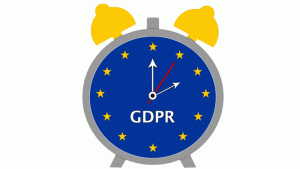— October 11, 2018
Technology can function as a key enabler for higher cognitive performance. Technology is as important for cognitive roles as it is for transactional ones, since cognitive work in organizations drives transactional tasks. With performance gains realized through transaction management software, the next game changer is to evolve the cognitive infrastructure in the operating model.
While machines learn, disrupt and occupy the defined and known cognitive tasks of humans across industries, technologies to advance cognitive performance in the mind and with teams have remained relatively stagnant to move uncertainties into higher certainty frameworks.
Professionals utilize many technologies in their cognitive work everyday, but were not built to advance their cognitive performance. These every day technologies include:
- spreadsheets
- presentation software
- documents
The tools leaders use for critical thinking in your organization today
All too often, critical thinking runs through spreadsheets. You may be surprised to discover the collage of spreadsheets your enterprise utilizes in its operating model — hundreds and thousands of spreadsheets (depending on the size of your business).
With spreadsheets, it’s challenging to arrive at informed decisions with 85%+ effectiveness. It’s also challenging to manage future uncertainties with 50%+ effectiveness.
How leaders communicate with stakeholders in your organization today
Beyond their voices, leaders and managers communicate with stakeholders primarily through multipurpose presentation software. A tremendous amount of time, money and effort is expended to build presentations as snapshots in time for stakeholders. Presentations to equity investors, lenders, internal management, operations teams and supply chain partners, among many others, do not provide a framework for dynamic communications that shape the thinking in the minds of your stakeholders. Their questions are all too often unresolved during meetings, which delay decisions. When additional meetings are scheduled, you resolve the initial questions from stakeholders without a clear understanding of the impact on outcomes.
Presentation software makes it challenging to communicate perspective and address stakeholder concerns in real time with 90% effectiveness.
How stakeholder expectations are conveyed in your organization today
Professionals primarily express their expectations verbally. They also write them in reference documents that are accessed infrequently, such as job descriptions, performance reviews, supplier agreements and annual reports, to name a few.
As documents are not actionable frameworks, it’s challenging to achieve expectations in dependent thinking with 85%+ effectiveness.
Imagine if the stock market operated the way business operates today
The stock graph transforms how you synthesize information in your mind to arrive at informed decisions. Let’s go back to the time when you couldn’t visualize stock graphs for your decisions. Before stock graphs existed, imagine you met with your wealth advisor who expected you to make decisions to invest your monies and said:
I’m glad you are interested in investing in the market. We have over 10,000 companies in our exchange. To help you make an informed decision, I’ll introduce you to the analysts; there are hundreds of them. Each of them will show you their spreadsheets. Then each will walk you through your options via presentations, while attempting to answer all your questions. I thought you’d want to know this will take time because the analysts structure their spreadsheets their own way; there isn’t any consistency between them. Nor is there consistency among their presentations. After you synthesize all this information in your mind, you should be in a position to arrive at an informed decision about how to best invest your monies.
If decision processes for investors worked that way, individuals could not make high-fidelity decisions effectively. They’d be attending a lot of meetings to gain insight. As a result, many stocks wouldn’t have performed as well and many portfolios wouldn’t have grown. Nor would have the market evolved as it has.
Yet this is exactly how decision processes in business work today
As executives continue to invest in their transactional operations over decades, it’s time they prioritize and invest in their cognitive operations. The technology in the transactional operations is far ahead of the technology in the cognitive operations. Yet the cognitive operations drive activity in the transactional operations.
Is ‘being human’ enough today in the cognitive era?
Historic methods to advance critical thinking and stakeholder communications using human mental models, past experiences, personal networks and fundamental analytics are no longer enough in today’s business world. As machines increasingly coexist with humans, anticipatory tools and advanced performance analytics are needed to survive, differentiate and grow businesses and their professionals.
The Anticipatory Leader Program from Burrus Research on Vimeo.
By Daniel Burrus and Neil Smith
Originally published here.
Business & Finance Articles on Business 2 Community
(53)
Report Post

